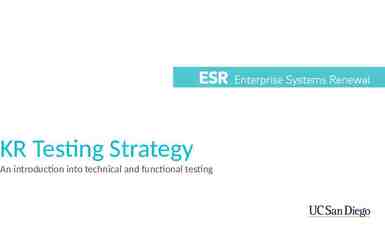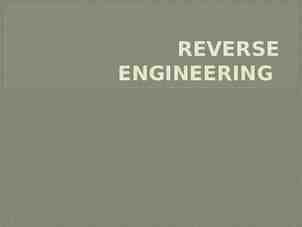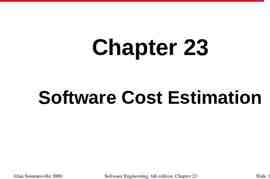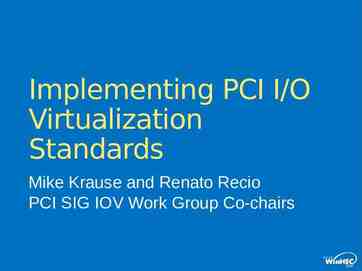Family and Medical Leave Act
10 Slides4.22 MB

Family and Medical Leave Act

What is FMLA? A federal law that provides job and benefit protection for up to 12 weeks (480 hours) to employees who meet eligibility requirements. It does not guarantee pay and does not provide additional leave hours. Employees are required to use their accrued leave before going into an unpaid leave status (if applicable). Leave hours run concurrently with FMLA hours. Reasons for FMLA are confidential and employees do not have to disclose this information to their supervisor.

Who is eligible for FMLA? An employee may be eligible for FMLA leave if they: 1. Have been employed by UHCL for at least 12 months as of the date the FMLA leave is to start, AND 2. Have worked at least 1,250 hours for UHCL during the 12-month period immediately before the date the FMLA leave is to start.

What qualifies for FMLA? The birth of a child and to bond with the newborn child within one year of birth. The placement with the employee of a child for adoption or foster care and to bond with the newly placed child within one year of placement. A serious health condition that makes the employee unable to perform the functions of their job, including incapacity due to pregnancy and for prenatal medical care. To care for the employee’s spouse, son, daughter or parent who has a serious health condition, including incapacity due to pregnancy and for prenatal medical care. Any qualifying exigency arising out of the fact that the employee’s spouse, son, daughter or parent is a military member on covered active duty or call to covered active duty status. FMLA leave can be taken for more than one qualifying reason in the same 12-month leave year. However, multiple serious health conditions or qualifying reasons for leave do NOT increase the total FMLA leave entitlement available.

FMLA Leave Types FMLA allows for leave to be taken as the following: Continuous leave – Time taken all at once. For example, an employee needs 4 straight weeks of leave or the full 12 weeks. Intermittent leave – Absences taken as needed. For example, an employee needs off of work for 2 hours, 2 – 3 times per week; or an employee may need off work up to 3 days per month due to flare-ups. Reduced schedule leave – The employee’s normal work schedule is reduced. For example, an employee may only work 8:00 – 12:00, Monday – Friday; the remaining hours will be FMLA. Some employees may need to use a combination of the different types of leave. For example, an employee is on continuous leave for 4 weeks, then returns to work on a reduced schedule for an additional 2 weeks.

Employee Responsibilities Provide 30 days' advance notice of the need to take FMLA when the need for leave is foreseeable (childbirth, adoption, necessary medical treatment). If 30 days notice is not possible, notice must be given as soon as practical. An employee's failure to provide information in a timely manner may result in the delay or denial of FMLA leave. Submit required FMLA forms, which can be found online, by the given deadline so that HR may review for FMLA eligibility and process the leave request. Notify supervisor of any absence as soon as reasonably possible, and whether absences falls under approved FMLA. Submit absence requests accurately in real time and in accordance with payroll period deadlines. FML Leave codes should be used. Maintain appropriate contact with your supervisor regarding your absences and return to work status. Prior to your return to work, provide a release from your doctor to your Benefits Coordinator authorizing you to return to work.

Employee Responsibilities - Absence Requests Employees must the appropriate FML Codes when submitting absence requests: FML Sick, FML Vacation, or FML Unpaid Absences coded as FML Sick and FML Vacation are still withdrawn from your personal accrued leave balances. These codes do not provide additional paid leave. By using the FML codes, FMLA can be accurately tracked in PeopleSoft. Selecting the FML Code in TRAM:

Supervisor Responsibilities Notify HR when any employee has been out for four (4) consecutive days if the absence may be FMLA related. If an employee is approved for FMLA: Maintain communication with employee regarding their absences. Reminder: Employees are not required to share personal medical information. If leave is continuous, the method of communication and frequency should be established when the employee initially goes out on leave. Ensure that the employee’s FMLA absences are accurately recorded and approved in PeopleSoft/TRAM by the designated cut-off time for each payroll period. If necessary: Clarify with employee whether the absence falls under approved FMLA. Plan for coverage of the employee’s job duties while the employee is absent. Notify HR if the employee’s absences exceed approved allotments.

Benefits Coordinator Responsibilities Interpret FMLA regulations and their application to each case. Determine employee eligibility for FMLA. Communicate with the employee while out on FMLA regarding leave balances, benefits, QLEs, etc. Communicate approvals and returns from leave to employee and supervisor. Maintain documentation of employee’s current and past FML use in file separate from personnel file.

Questions? Contact us. Kristyn Dalmolin [email protected] 281-283-2169 Serving last names A – L Caylee Walton [email protected] 281-283-2161 Serving last names M - Z






